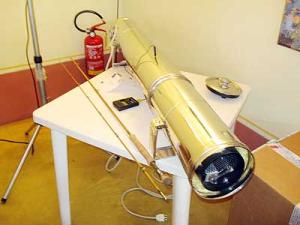Post
Bamboo rods and building a fishing rod
Rod & Tackle Building BFT-Editor -TMH PM

It’s in the UK around the second half of the 19th century that the actual modern bamboo rod was born. In the ’70s, fiber-glass rods started to appear followed by graphite rods which were less expensive and more resistant, and above all, more “modern” than bamboo rods. As a consequence, bamboo rods begun to decline and for many years virtually disappeared from the market. However, in the latest years we have been witnessing a so called “bamboo Renaissance” as more and more fly anglers not only go back to bamboo, but also make their own cane rods. In the recent First European Bamboo Rod Makers Gathering held in Sansepolcro, Tuscany (Italy) in May 2008, for instance, more than 100 rod makers from all over Europe met to share their methods, views and rods. In the USA, an even longer tradition is annually carried out at the Catskill Fly Fishing Center and Museum, New York, and usually in Fall.
Bamboo Rodmaking School in Sansepolcro, Tuscany (Italy)
Building a graphite fishing rod can be done by using a DIY kit as I did. A kit usually comes with all necessary rod parts, wrapping threads, glue and, above all, assembling instructions.
The necessary rod parts included in the kit are:
* rod blanks
* reel seat
* cork (or synthetic) handle
* snake guides
* stripping guides
* tip-top
The necessary rod parts included in the kit are:
* rod blanks
* reel seat
* cork (or synthetic) handle
* snake guides
* stripping guides
* tip-top
Rolf Baginski is considered the “father” of many bamboo rodmakers in Europe
The exercise of making a fishing rod on my own not only made my fishing experience much more enjoyable, but also created in me that necessary self-confidence to start building a bamboo fly fishing rod.
The craft in itself is not too difficult to learn. Basically, you need the same rod parts as above, but you need to make the bamboo blanks on your own, which is in itself enough stuff to write books. However, with the help of master rodsmiths and, today, the internet, you can find all information about how to make your own bamboo rod.
The craft in itself is not too difficult to learn. Basically, you need the same rod parts as above, but you need to make the bamboo blanks on your own, which is in itself enough stuff to write books. However, with the help of master rodsmiths and, today, the internet, you can find all information about how to make your own bamboo rod.
“Tonkin” cane with its “power fibers” is used to make a cane rod
Firstly, you need a bamboo culm of the right type: “Tonkin” cane from China is the best. Then you need to make bamboo strips of finer and finer sizes and glue them together to form a “blank”. Traditionally, the bamboo strips are shaped in the form of a triangle so that by joining six strips together you make an “hexagonal” rod. Variations exists: “quad-” and “penta-” bamboo fly fishing rod rod are more rare for instance.
Tempering (i.d. exposing at high temperature for a set time) the bamboo strips in a simple, often self-built oven, and so modifying the inner properties of the wood is what makes a bamboo rod what it is, eventually : a unique, wonderful tool which both enthralls the angler and the collector alike.
A legendary Everett Garrison bamboo rod
Tempering (i.d. exposing at high temperature for a set time) the bamboo strips in a simple, often self-built oven, and so modifying the inner properties of the wood is what makes a bamboo rod what it is, eventually : a unique, wonderful tool which both enthralls the angler and the collector alike.
Bamboo Rodmaking School in Sansepolcro, Tuscany (Italy)
Alessandro Brunelli is an independent bamboo rodmaker and writer.
